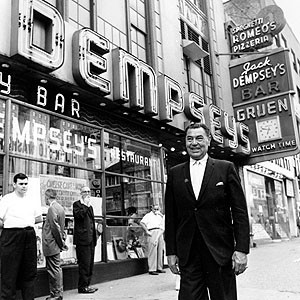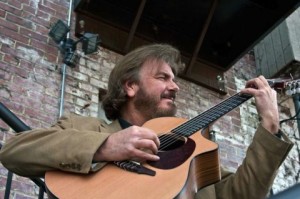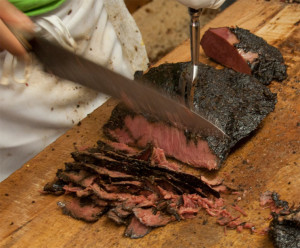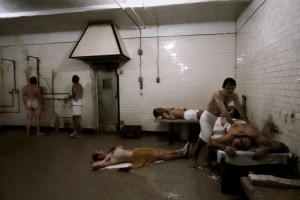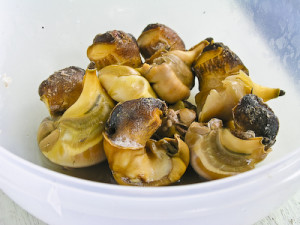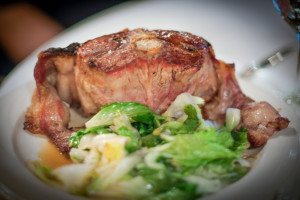In HG’s Bronx youth basketball ruled. Sure, there were plenty of softball games, rough and tough sandlot football battles, bleacher seats at Yankee Stadium (to watch the Yanks) and at the Polo Grounds (to watch the football Giants). But, the game that captured the hearts and minds of Bronx guys was basketball. Every Sunday, HG played three-man ball on the asphalt courts of Public School 86 (on Reservoir Avenue) or the Williamsbridge Oval (near Mosholu Parkway). Winning threesome kept the court. Losers left and another trio took their place. First team to score 16 points won. HG was no star. Just a very competitive and fearless journeyman. After games were over, the hungry young men shared huge, greasy pizzas at Joe’s Pizzeria on Jerome Avenue or numerous hot dogs with sauerkraut and mustard at nearby delicatessens. Saturday night was reserved for college games at Madison Square Garden. St. John’s, N.Y.U., C.C.N.Y., Manhattan, L.I.U. all had powerhouse teams and legions of manic fans. Apres game it was off to the Blue Ribbon, a German restaurant, for huge apple pancakes and beer. Currently, HG is watching the NBA playoffs. The players, in HG’s opinion, are the greatest athletes in the world. They combine size, strength, coordination, speed, grace, endurance and a fiery will to win. In recent days HG has seen ferocious, brilliant games culminating in last second heroics by Derrick Rose, Chris Paul, Paul Pierce and Lebron James. Yes, Europeans call soccer “the beautiful game” and Canadians are nuts about hockey…Fuhgeddabout it!! The game that’s got everything is NBA play-off hoops. And, depleted after vigorous TV watching, HG sits down to sumptuous eats prepared by BSK. Beats the hell out of pizza and hot dogs.
Hoops Magic
May 15th, 2015 § 0 comments § permalink
Fighter Eateries
May 10th, 2015 § 5 comments § permalink
Recent post on the great heavyweight champ Joe Louis and the New York night club he fronted (Park Avenue Club), has made HG recall the various bars and restaurants of HG’s youth that were named after fighters (the battlers either acted as greeters or were part owners). The most famous was Jack Dempsey’s on Broadway (between 49th and 50th). Really good food. The steaks were outstanding. The ex-heavyweight champ was always on hand, greeting customers and handing out autographed photos. It had a long run (1935-1974) and was professionally managed by co-owner Jack Amiel (He owned the next door Turf Restaurant and his horse, the longshot Count Turf, won the 1951 Kentucky Derby). You can see the restaurant in the movie, “The Godfather.” The art directors did a superb job of reproducing the facade. A bit south on Broadway (1677A Broadway) was Abe Attell’s Cafe. This was more a bar than a full fledged restaurant (had just enough food on hand to satisfy the liquor authorities). Attell, nicknamed “The Little Hebrew”, was a great fighter (featherweight champ with 102 wins to his credit) and all-around scoundrel. He was indicted for aiding Arnold Rothstein in the scandalous “Black Sox” World Series fix but was found innocent by the jury. Big feature of the bar was a colored photo of Abe and opponent Harlem Tommy Murphy–both covered in blood. Abe’s bar was favored by heavy drinking bookmakers and gamblers. Few ate there. Abe himself favored Lindy’s Restaurant a few blocks away. (Broadway gag: “The food is so bad at Attell’s the rats go next door to eat.”) Abe grew up in an Irish neighborhood in San Francisco. Being Jewish, he had to fight in the streets every day. He recalled that he had ten fights in one day. The Attells were a fighting family. Brother Monte Attell, “The Nob Hill Terror,” was world bantamweight champ. First time two brothers were world champs at the same time. The third brother, Caesar, also fought professionally. Good. Not great. He was nicknamed “Two-and-a-half” because that’s what he always tossed in the hat for charitable causes. Further north on Broadway was Benny Leonard’s Cocktail Lounge (corner of 72nd Street). The lightweight champ’s place had a very brief life. Sugar Ray’s Restaurant on Seventh Avenue in Harlem had a longer run and served good food. A.J. Liebling, the eminent journalist who often wrote about boxing, reported that the big, tender pink pork chops he devoured there were mighty tasty. Middleweight champ Sugar Ray Robinson was a man of style. His colorful Cadillac convertible was often parked in front of the restaurant and was much admired. Henry “Hurricane Hank” Armstrong, one of the greatest fighters in history (he held the featherweight, lightweight, welterweight titles at the same time) also opened a Harlem restaurant, Melody Lounge. Bright lights and jazz music weren’t for Armstrong. He closed Melody Lounge and after retiring from boxing became a Baptist minister and youth counselor. Heavweight contender Tami Mauriello had a red sauce Italian restaurant, Tami’s Corner, in the Belmont section of The Bronx. HG recalls eating some splendid sausage and pepper sandwiches there. The best of the fighter associated restaurants was Lew Tendler’s Tavern in Philadelphia. Lew was an esteemed lightweight battler (More than 170 fights with only ten losses). Lew was considered to be the best fighter never to have won a championship and Philadelphia fight enthusiasts are still angry over the injustice. Tendler’s was a raucous, raffish place filled with gamblers, entertainers, Italian and Jewish gangsters. On nights of big fights it was the traditional gathering place of sports writers, HG ate there twice when HG was in Philly aiding in sports coverage. Like Tendler, the food was Jewish: Matzo ball soup. Chopped liver. Huge, garlic smothered tenderloin steaks. Like Sammy’s Romanian in New York but more restrained when it came to chicken fat. When a fight was on TV, gamblers gathered at the bar and wagered on every round. The gambling action was so frantic the sporting guys would forget to order drinks. The bartender, Lew’s son, would turn off the TV. “No money on the bar. No TV.” The bar was soon smothered in green. The New York bar favored by fighters and managers was the Neutral Corner on Eighth Avenue. The most mannerly and quiet bar HG ever frequented.
Fight Talk
May 8th, 2015 § 1 comment § permalink
HG paid scant attention to the over-hyped Mayweather-Pacquaio fight. HG had watched Mayweather battle on TV a few times. HG, a student of “the sweet science” (That’s what A.J. Leibling, the great New Yorker writer called boxing), thinks Floyd the best boxer of the modern era. No puncher, Floyd is a beautifully conditioned athlete who defeats his opponents with fast hands, ring intelligence and flawless footwork. Brilliant, but unexciting. Pacquaio is a busy little guy who is a persistent fighter without a knockout punch. Floyd won a unanimous decision (which is what HG predicted to BSK). Dull fight. Lovers of blood and thunder were disappointed. This made HG take a trip down memory lane and remember a dinner with Joe Louis, the great ex-heavyweight champ and Billy Graham, the very slick Irish welterweight from New York’s East 30’s neighborhood. The venue was the Park Avenue Club, a New York midtown night club fronted by Louis. (Moonlighting from his job as a journalist, HG was the press agent for Louis and the club). The time was the early 1950’s. Graham and Louis ate some thick steaks accompanied by French fries. HG sipped martinis and ate corned beef hash. Graham had just retired (He lost his last fight to Chico Vejar). Graham lamented the fact he never became world champion, losing some disputed fights to Kid Gavilan. Louis and Graham agreed that mob influence played a role in denying Billy the title. Graham was a good or better boxer than Mayweather. He won 58 straight fights without a loss. He had 120 fights (102 wins, 15 losses and 9 draws). He was never knocked off his feet and he battled some bruising punchers: Joey Giardello (three fights); Kid Gavilan (three fights); Carmen Basilio (three fights). Mayweather’s 49 fights seem a paltry number when compared with the records of old time battlers. Benny Leonard (“The Pride of the Ghetto”), had 219 fights losing only 22, most in the early part of his career. Charley Goldman, who became famous as the trainer of heavyweight champ Rocky Marciano, had some 400 bouts as a bantamweight. Barney Ross, the welterweight champ, had 81 fights (72 wins; 4 losses; 3 draws; 2 no contests. Was never kayoed and was knocked off his feet only once (by Jimmy McLarnin). Ross fought three epic battles with McLarnin (Winning the first and became the first boxer to hold lightweight and welterweight titles at the same time; lost the second and won back the welterweight championship in the third). Their battles had ethnic overtones. Ross was Jewish (born Dov Ber Rosofsky) and McLarnin was Irish (much beloved by New York’s Catholic Irish despite the fact that McLarnin was a Methodist). McLarnin knocked out three great Jewish welterweights –Ruby Goldstein, Sid Terris and Benny Leonard (during an ill advised comeback by Leonard). This earned him (very political incorrect times) the nicknames: “The Jew Killer” and “The Hebrew Scourge.” Ross, a World War Two hero who killed a score of Japanese in the Battle of Guadalcanal and rescued a wounded comrade, was a very, very tough guy. His childhood pal (and partner in small time crime) was Jack Ruby, who killed Lee Harvey Oswald. Ross, who worked briefly for Al Capone, before becoming a boxer, used his mob connections to smuggle arms to Israel during the War for Independence. He was a character witness for Ruby during the latter’s trial. In his last fight, Ross lost his welterweight title to Henry Armstrong. Ross took a terrible beating. Despite efforts by the referee and his manager to stop the fight, Ross refused and said he’d lose the title but walk out of the ring on his own two feet. And, that’s what he did.
Chicken Curry Highs and Lows
May 1st, 2015 § 0 comments § permalink
BSK made chicken curry last night and it was a knockout. The basic recipe was based on the curry Vikram Vij, the master of Indian/Fusion cuisine, makes for his family. BSK tweaked his cookbook recipe (more ginger, no garam masala, no cloves, lots of marjoram ). BSK cooks the chicken thighs with their bones. Adds more flavor. When HG began going to restaurants in the 1950’s there were very few Indian restaurants in New York. “Curry Hill” did not exist. The East Village curry joints did not exist. If there was delicious Indian food in Jackson Heights, Queens, HG did not know about it. HG first tasted chicken curry at Longchamps (long closed New York chain of excellent upscale restaurants). This was a suave dish with a slight amount of heat. HG devoured it with delight. When HG/BSK began their marriage, BSK used the Michael Field recipe for chicken curry. The late Michael Field was the author of unerring recipes. Follow the recipe and you couldn’t go wrong. The Field curry was rich (sweet cream was an ingredient) and called for a variety of condiments–chutney, peanuts, coconut flakes, bacon, sliced scallions, etc. Worst curry HG ever tasted was at La Coupole, the famous brasserie on Montparnasse in Paris. La Coupole has a magnificent art deco interior but, unfortunately, serves assembly line food. The touted lamb curry was a gristly, tasteless disaster. London is the go to city for Indian food. Loads of cheap Indian cafes and a variety of plush and posh restaurants. The cheap joints are very good and the expensive eateries are a revelation (Chutney Mary is an HG/BSK favorite).
Joy And Sadness
April 21st, 2015 § 0 comments § permalink
A wonderful musical evening at the home of Polly B. and David F. — delightful, life enhancing friends and neighbors. In attendance was guitarist Marc Yaxley and vocalist/percussionist Julie Hawkins who sang and played for the assembled crowd from Tesuque, Jacona and Santa Fe. HG/BSK nibbled excellent cheeses and drank red wine as the beautiful sounds reverberated off the spacious living room’s adobe walls. Yaxley is one of the country’s best guitarists and he showed the instrument’s versatility by playing everything from Spanish and Mexican classics to Charley Parker and Duke Ellington jazz compositions. (Yes, the guitar is capable of illuminating early bebop). An HG neighbor told the food authority he was planning a trip to New York City and wanted to eat in some Greenwich Village eateries that had retained the old bohemian ambiance of the Village. HG recommended two places specializing in Spanish cuisine—El Faro on Horatio Street in the West Village and El Charro on Charles Street. Similar menus–chorizo, paella, seafood in garlicky green sauce. A heavy hand with garlic. Savory pork chops and fried chicken. Platters of saffron rice. Big pitchers of cheap sangria. HG/BSK enjoyed many festive evenings in these joints. When HG returned home from the music, HG looked up these restaurants on the internet because old time dining venues are increasingly vulnerable to the New York real estate monsters. Sadness. El Faro has been closed for some two years. Located in a very old building, El Faro was fighting a losing battle with mice and was shut down by the city’s health inspectors. The good news is that El Charro still flourishes. HG/BSK will round up some family members when next in New York and dine there. Sangria and smiles are anticipated.
Happy Heartburn
March 18th, 2015 § 3 comments § permalink
In HG’s various nostalgia drenched accounts of the long deceased Romanian-Jewish restaurants (called “Romanian Broilings”) of New York’s Lower East Side, HG failed to mention that Pastrami, the delectable, peppery smoked meat, was introduced to the United States by these restaurants. The delightful author, Patricia Volk, claims her grandfather, a Romanian-Jewish immigrant and proprietor of a Delancey Street delicatessen/eatery, was the first to serve Pastrami, therefore ushering in happy heartburns for generations of American Jews and discerning non-Jewish fressers. Food historians claim Pastrami derives from Basterma, a dried beef beloved by Turkish warriors who brought the delicacy to Romania. (Pastrami is mentioned, favorably, along with Mamaliga [polenta] and Karenezelach [ground beef, onion, garlic cigar shaped hamburgers] in the rousing Yiddish music hall favorite, “Romania, Romania”.) Alas, first rate Pastrami is now tough to find — beyond the speciality Jewish delis like Katz’s on Houston Street and Langer’s in LA, but the majority of Pastrami being served is commercially made and a pale comparison to the real thing. Patricia Volk’s grandfather started a great tradition. The family fed New York in splendid restaurants for 100 years. Morgen’s (closed in 1985), run by Patricia Volk’s parents, was an HG favorite. Located in the Garment Center, it was always filled with designers, lovely models and cloak-and-suit big shots. (Read Volk’s books, “Stuffed” and “Shocking Life.” Also, don’t miss books by Volk’s pal (and HG/BSK’s) Stephanie Pierson. She’s a world class wit. Her latest is “The Brisket Book.”).
The Baths
March 3rd, 2015 § 0 comments § permalink
During the 1950’s when HG was busy combining careers as a journalist and Broadway press agent, HG would often overindulge in strong drink. (BSK maintains this tendency has not wholly disappeared). The favorite boozing venue of HG and his raffish pals was Moe Dubiner’s bar/restaurant (long closed) on Stanton Street in the Lower East Side. When Moe shuttered his joint at 4 AM, the vodka and whiskey stoked group would often visit the nearby Second Avenue Russian Baths. Immigrant Jews believed in the health benefits of a good “shvitz” (sweat) so the Lower East Side had many bath houses but the Second Avenue was acknowledged as the best (the last remaining Bath House in the LES / East Village is Tenth Street’s Russian and Turkish Baths). HG followed a strict ritual at the Second Avenue. First, a visit to the Eucalyptus Room. Here, HG lounged in dry heat as herbaceous aromas wafted through the room. Then, a warm soapy shower. Into the Russian Room. Six rows of bleacher like marble seating. Hot steam. Macho guys like young HG sat on the very top row where the steam was blazing hot. Sweat poured off HG. Wandering through the room were the attendants/masseurs, hefty fellows clad only in jock strops. They carried bunches of birch branches. HG would beckon and an attendant would swing the branches through the air, sending a stream of hot air to a designated part of HG’s body. After being poached and losing pounds of water (vodka ?), HG would leap into the ice plunge. Yes, it was what it sounds like. A pool of ice cold water. Young HG managed to survive the shock to his system. Then, HG would stand against a wall (protecting his private parts) while an attendant directed a stream of warm water from a high pressure hose at every part of HG’s body. (Some older gentlemen oped for a “high colonic” or a “low colonic”, an internal cleansing. No details. You don’t want to know). HG would shower and then repeat the ritual: Dry heat, steam heat, ice plunge, high pressure hose, shower). The attendants also offered a “playtzeh”, a vigorous, painful massage. HG tried it once. Sheer masochism. After all the steaming and showering, HG picked up a cotton nightshirt and robe and slept a peaceful eight hours in the bath house dormitory. Awakened with an appetite like a ravenous beast. Fortunately, the Second Avenue served a hearty breakfast buffet: Many varieties of herring, smoked whitefish, boiled potatoes, sliced tomatoes and onions, sour cream, cream cheese, cottage cheese, rye bread, pumpernickel bread, bialys, bagels, onion rolls. Coffee. Tea. And, the thoughtful management provided a few bottles of brandy and chilled vodka. All of this took place in the era before bath houses became boy-meets-boy hangouts of the gay community. The Second Avenue was relentlessly heterosexual and ethnic. HG would leave the Second Avenue sober, rested, clear headed …and very, very clean.
“Where The Finest Jews Eat”
March 1st, 2015 § 2 comments § permalink
For many years that was the motto of Moskowitz & Lupowitz, a Romanian-Jewish restaurant on Second Avenue and Second Street in New York. It was a favorite of Groucho Marx, Milton Berle, Eddie Cantor, Sid Caesar and other theatrical luminaries. It was founded in 1909 by Romanian immigrants and for many years was owned and managed by Louis Anzelowitz until finally closing in 1966. It was one of HG’s favorite New York restaurants, offering a robust array of artery clogging traditional Eastern European Jewish dishes. (The loud Sammy’s Romanian on Chrystie Street is the last of the Romanian Jewish restaurants on the Lower East Side. Its menu is a pale shadow of the wonders once offered by M & L). When HG was a child M & L loomed large in HG’s imagination as he often heard their catchy jingle being sung by the Pincus Sisters on the Yiddish language radio station WEVD (named after socialist Eugene Victor Debs). M & L was the classiest Lower East Side restaurant with waiters in tuxedos and thickly carpeted floors. Despite the elegant atmosphere, it was never very expensive. In 1940 you could have a five course steak dinner for $1.35 (fruit juice, appetizer, soup, main dish, dessert). In 1962 you could have this meal for about $4.50. HG’s cardiologist would not have approved of HG’s typical M & L meal: Brains, sweetbreads, chicken livers or chopped liver with chicken fat and onions as an appetizer. This was followed by chicken soup with “kreplach” (meat filled dumplings). Main course was an M & L specialty: “Mushk” steak (rib steak) with “kasha varnishkes” (buckwheat groats with Farfalle pasta, fried onions and chicken fat.) Dessert was an afterthought: Stewed prunes (for digestive purposes). HG drank vodka with the appetizers, beer with the main course and Slivovitz (plum brandy) as a digestif. Plus Russian tea (strong black tea with a spoonful of cherry jam). HG often went to M & L with a stylish girl friend who ordered four appetizers as a meal (they had to be brought in succession by the waiter who grumbled as he made trips to the kitchen). The lady washed them down with Wild Turkey bourbon on the rocks. Pre-World War Two Lower East Side had many “Romanian broilings” restaurants. When little HG accompanied his father to that neighborhood to buy HG a winter outfit (heavy plaid mackinaw, corduroy knickers, cap with attached earmuffs) the two often would visit these joints to lunch on broiled “karnezelach” (beef, garlic and onion cigar-shaped hamburgers) with crisp “silver dollar” potatoes. At night, these places would transform and often featured a violinist playing Yiddish and Gypsy melodies. Italian mobsters and their Jewish gangland associates loved these rough and ready eateries. They were known as “Jew joints.” The bad guys never patronized Moskowitz & Lupowitx. Too classy. Too bourgeois. A “carpet” joint.
Scungilli
February 27th, 2015 § 0 comments § permalink
The dictionary defines scungilli as “a large marine whelk or conch eaten as food.” Yes, this was a protein–in the form of salad or mixed with pasta smothered in super-hot red sauce–that was served in many old fashioned New York Italian restaurants during HG’s youth. The sea creature was pronounced “skoonjeel” and was delicious. Scungilli mostly disappeared from Manhattan menus and soon could be found in only two restaurants in Little Italy–traditional Vincent’s and upstart Umberto’s. In HG’s opinion the best fiery scungilli pasta dishes were found in a tiny Italian joint in Chinatown (corner Mott and Pell). HG ate there with two rugged Goodfellas who solicited HG’s promotional advice on how to improve sales at their legitimate front –a Staten Island furniture store. (Of course, scungilli was always available in Brooklyn, the Corona and Howard Beach neighborhoods of Queens and in the beloved Belmont Tavern, Belleville, New Jersey). Scungilli had its big moment of fame when gangster Crazy Joe Gallo was murdered at Umberto’s Clam House on April 7, 1972. (Scungilli, presumably, was on the table when he met his end.) Crime analysts have wondered why Gallo was dining at Umberto’s rather than the more traditional Vincent’s. HG has a theory: Joe was sentimental and his father, also a gangster, was named “Umberto.” Recently, a hungrygerald.com follower informed HG that there’s a very good Italian scungilli restaurant in Vero Beach, Florida. HG will keep it in mind if he ever ventures into Jeb Bush territory.
Mutton Chops
February 24th, 2015 § 0 comments § permalink
If you are a happy carnivore with a taste for robust red meat, there is nothing better than a big, rare mutton chop. Oddly, it is not a celebrated menu item in New York or Paris. (If you search, you can find mutton chops in London). In times past you could find mutton chops at two locations in New York: Keens Chophouse on W. 30th Street and at Gage & Tollner on Downtown Brooklyn’s Fulton Street. Gage & Tollner was founded in 1878 (closed in the 1990’s) and had a mellow antique interior with 38 gas lamps, wood paneling and mahogany tables. The mutton chop was medium in size and served with corn fritters sweetened with a bit of maple syrup. (The combination seemed unusual but it worked). Thankfully, Keens is still in business and their legendary mutton chop is still giant. Prices however are a different story: In keeping with present day oligarchy-influenced New York the chop now fetches $51.00. HG/BSK enjoyed Keens often when they lived on the Upper West Side during the 1960’s.(Prices were much more modest then). Once, during a Boston-type blizzard, HG/BSK ventured out at night, found an intrepid cab, and supped on Keens’ mutton chop, skillet sized golden hash browns and wine. Only two tables in the restaurant were occupied. Keens (founded in 1885) was not only a cold weather choice. On a blazing July day, HG/BSK shopped for baby furniture at Macy’s (baby daughter Lesley was due in August). HG and very pregnant BSK left summer heat behind and had an early dinner of roast beef, fiery horseradish and Yorkshire Pudding at Keens. The beautifully aged restaurant interior was cooled by very modern air conditioners. HG/BSK felt they were dining in late autumn London. Keens now charges $58.00 for its prime rib.

